American Artists Against War
Artists of conscience have always responded angrily and passionately to war, genocide and torture. This book examines the work of American visual artists from 1935 to 2010 who believed that governments and humanity must be held to higher moral standards.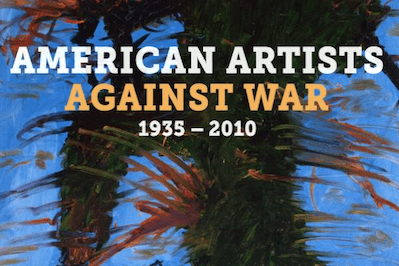
“American Artists Against War: 1935-2010” A book by David McCarthy
Between 1810 and 1820, the great Spanish artist Francisco Goya created a series of 82 prints about the Peninsular War between Napoleon’s French Empire and Spain from 1808 to 1814. Known as the “Disasters of War,” these prints have been widely regarded as among the most powerful and compelling anti-war artworks in the entire history of art. His scenes of savagery, suffering and human despair in this series are strikingly reminiscent of the wars of the 20th and 21st centuries. More than a century after Goya created his brilliant series, another Spaniard, Pablo Picasso, repeated that anti-war theme with equal force in his monumental painting “Guernica.” Picasso’s masterpiece, one of the most famous paintings of the 20th century, was a condemnation of the bombing of the small Basque town of Guernica by the German Air Force on April 26, 1937, at the direction of Fascist insurrection leader Gen. Francisco Franco.
Goya and Picasso are among the thousands of artists of conscience throughout the centuries who have refused to remain indifferent to the plagues of human existence, including war, genocide, political persecution, poverty, racism, sexism and every other form of oppression. American artists have often been at the forefront of this tradition, especially in their anti-war efforts during the past century. An abundant literature on American artists of social conscience exists, offering scholars and laypersons engaging opportunities to see how artists advance the honorable tradition of dissent and engaged public citizenship.
Rhodes College professor David McCarthy has added an outstanding volume to this heritage. His “American Artists Against War: 1935-2010” is a major contribution to the growing history of American political art. It provides an impressively comprehensive coverage of American artists active in anti-war efforts, both politically and artistically, from 1935 to 2010. His treatment of the American descendants of Goya and Picasso reflects exemplary historical research and meticulous attention to the visual details of their artworks. Above all, McCarthy’s book provides further intellectual and moral confirmation that political art is an entirely admirable enterprise, especially when it is combined with rigorous standards of artistic quality.
This view has not always been popular in art history and criticism. For many decades, formalist and other mainstream scholars and critics have shown disdain about artists who express critical political views in their artworks. Especially during the Cold War era, political art specifically, and even figurative art generally, were disparaged, while abstract expressionism ruled the day. Even in the politically contentious ’60s and ’70s, when political art enjoyed a powerful resurgence as this book persuasively reveals, many traditional art historians continued to look with disfavor, and sometimes even hostility, toward those artists and the scholars and writers who treated their works sympathetically.
Throughout the long time frame of his volume, McCarthy demonstrates the powerful persistence of the anti-war vision in American art. He also sets the tone with an effective historical context for this tradition. Adding to the seminal contributions of Goya and Picasso, he also notes the efforts of Jacques Callot’s 1633 dramatic series titled “Miseries and Misfortunes of War,” as well as trenchant efforts by Pieter Bruegel, Honoré Daumier, Otto Dix, George Grosz, Käthe Kollwitz, and Mexican muralists José Clemente Orozco, Diego Rivera and David Alfaro Siqueiros, among others. Virtually all the American artists represented in this book have been well acquainted with these iconic figures and most have been eager to acknowledge their moral and thematic influence.
This broad historical perspective is especially useful for readers who seek a deeper understanding that goes beyond the topicality of specific horrors, including murderous Nazi violence and torture, the problematic atomic bombing of Hiroshima and Nagasaki in World War II, the barbarous use of napalm and the grotesque My Lai massacre in Vietnam, and the infamous torture at Abu Ghraib prison by American military personnel during the second Iraq War. As horrific as these were, they are all too common in human history, differing only in scale and the occasional use of more lethal technology.
Artists of conscience, and some of the finest visual artists in the country, have always responded angrily and passionately to these kinds of events, seeking to persuade their audiences that governments and human beings need to be held to higher standards of conduct and decency. Some of McCarthy’s early examples are painter and printmaker William Gropper and sculptor David Smith, whose works powerfully condemned fascist violence and aggression during World War II. McCarthy pays close attention to the visual details in Smith’s “Medals for Dishonor” bronzes, and this examination, combined with McCarthy’s insightful use of Freud’s theories as they apply to visual analysis, constitutes a major contribution to the field. Professor McCarthy also offers perceptive commentary and examples from other major socially conscious artists of that era such as Philip Evergood and Jacob Lawrence.
In the aftermath of World War II, many American artists turned their attention to the potential annihilation of the human species when the United States and the Soviet Union squared off as nuclear powers during the early Cold War era. Such political art luminaries as Hugo Gellert, Rockwell Kent and Anton Refregier are well represented in McCarthy’s text. These are especially notable inclusions, because these men have been conspicuously missing in most standard art historical accounts. Their leftist beliefs and associations made them casualties of Cold War hysteria. Their continued absence from cultural history has contributed to the disgraceful historical amnesia that afflicts American education and scholarship.
The most significant inclusion in this section of the book is the author’s highly favorable account of Ben Shahn’s series entitled “The Lucky Dragon.” Shahn, one of the premier political artists in American art history, produced several paintings and drawings about Japanese fishermen who suffered radiation poisoning after American hydrogen bomb testing in the Pacific Ocean in March 1954. McCarthy also addresses Shahn’s other anti-nuclear artworks, as well as those of additional key political artists of the era, including Leonard Baskin, Leon Golub, Rico Lebrun, Edward Kienholz, Bruce Conner and H.C. Westermann.One of the major sections of “American Artists Against War” highlights artistic responses and opposition to the Vietnam War. Here, the author analyzes and reproduces some of the most compelling and controversial artworks in the history of socially conscious art in this country. One dramatic work, “Q. And Babies? A. And Babies,” was an offset lithograph poster from 1969 produced by the Art Workers Coalition in response to the My Lai massacre. Stark and brutal, it depicts a photograph of slain Vietnamese parents and children. This effort was widely reproduced and extremely well known to anti-war protesters throughout the world for the duration of that grotesque war.
Peter Saul, Nancy Spero, Rudolf Baranik, Robert Colescott, Robert Arneson, Martha Rosler, May Stevens, Hans Burkhardt and others are well represented and the works that are reproduced here reflect both extraordinary artistic skill and deep personal passion against the Vietnam War. Their works are not easy to view. Many are the antithesis of “beautiful.” Intended to shock, they are unambiguously direct in their condemnation of American actions and policies. To give their message more power, they avoided subtlety and in the process, they often offended critics and scholars who worshiped “subtlety” and “nuance.” But these artists knew all too well that there was nothing subtle or nuanced about U.S. complicity in the slaughter of hundreds of thousands of Asian women, men and children.
In the post-Vietnam era, many visual artists continued to produce anti-war works in all forms. McCarthy does an outstanding job of showcasing the wide range of artworks and themes since the end of the Vietnam conflict. One major focus, for example, is on U.S. intervention in Central America. Artists of color also link issues of racism with American imperialism and questionable foreign policy adventures in Third World regions.
Some of the most important contemporary American political artists are represented in this ambitious book, even beyond those whose works were instrumental in protesting the Vietnam War (many of whom continued after the war, like Golub, Rosler, Saul, Spero and others, to produce powerful socially conscious artworks). Figures including Hans Haacke, Sue Coe, Jenny Holzer, Joyce Kozloff, Barbara Kruger and Robbie Conal are presented throughout. They have been widely and favorably recognized, nationally and internationally, because of their talent and productivity.
“American Artists Against War” also presents works from highly visible artists who are not primarily known for producing works with political content. The book reproduces and discusses works from Keith Haring, Chris Burden, Claes Oldenburg, Raymond Pettibon and Richard Serra, all of whose reputations emerge primarily from their other creative efforts. But their anti-war pieces here encourage readers to develop a more comprehensive understanding of these artists and, in the process, a fuller appreciation of political art generally.
One of “American Artists Against War’s” most profound contributions is bringing to public attention the works of political artists whose efforts are both exemplary and prolific, but whose presence in conventional art historical and critical literature and educational institutions is sparser (or sometimes minimal or nonexistent) than it should be. McCarthy offers his readers a glimpse of some of the artworks of Mariona Barkus, Art Hazelwood, Eva Cockcroft, Erika Rothenberg, Rupert Garcia, Colin Matthes, Malaquias Montoya, Jeremy Deller, Emily Prince, Daniel Heyman and others. These women and men are deeply admired in resistance communities and among the small number of scholars and critics who write, speak and teach about political artists perceptively and sympathetically.
This book should encourage specialists, activists and general readers alike to look more deeply for the artists in their own communities who defy convention by challenging the political orthodoxy of their times. Beyond the stunningly wide coverage in “American Artists Against War,” creative men and women even now are using their talents to chronicle the catastrophic price of war, racism and oppression, and to offer their viewers alternatives to the unacceptable status quo. Among hundreds of others, Mariano Gonzales in Anchorage; Doug Minkler in Berkeley, California; Allen Schmertzler in Portland, Oregon; John Pitman Weber in Chicago; and Dwayne Booth (Mr. Fish) in Philadelphia have used a variety of artistic forms to continue the tradition chronicled so effectively in this volume. Readers should look for their work and those of their socially conscious counterparts throughout the nation. More importantly, they should heed the messages of these visionary artists and organize the political revolution that Sen. Bernie Sanders and others have called for in the perilous decades of the early 21st century.
Your support matters…Independent journalism is under threat and overshadowed by heavily funded mainstream media.
You can help level the playing field. Become a member.
Your tax-deductible contribution keeps us digging beneath the headlines to give you thought-provoking, investigative reporting and analysis that unearths what's really happening- without compromise.
Give today to support our courageous, independent journalists.
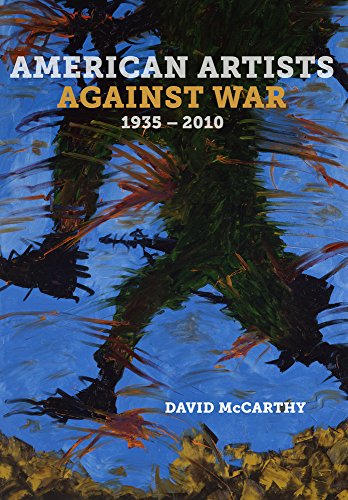
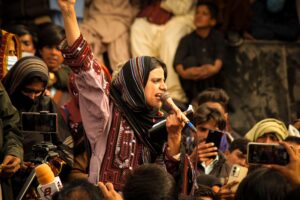
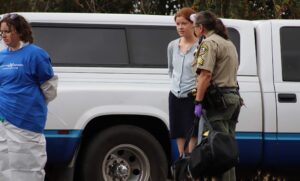

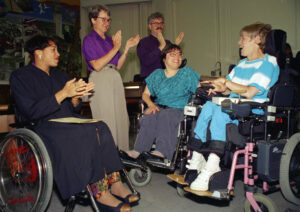
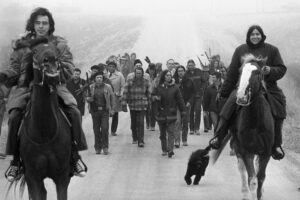
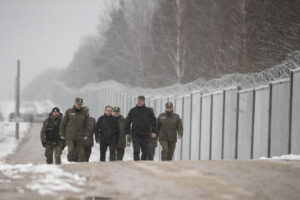
You need to be a supporter to comment.
There are currently no responses to this article.
Be the first to respond.